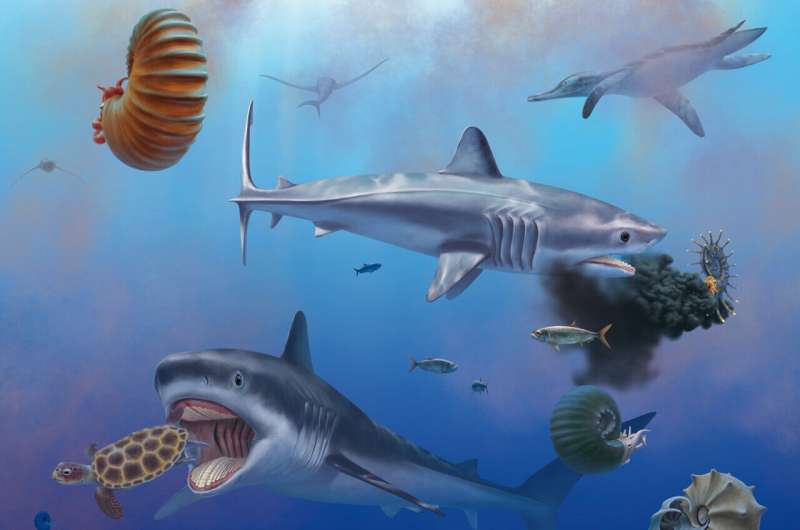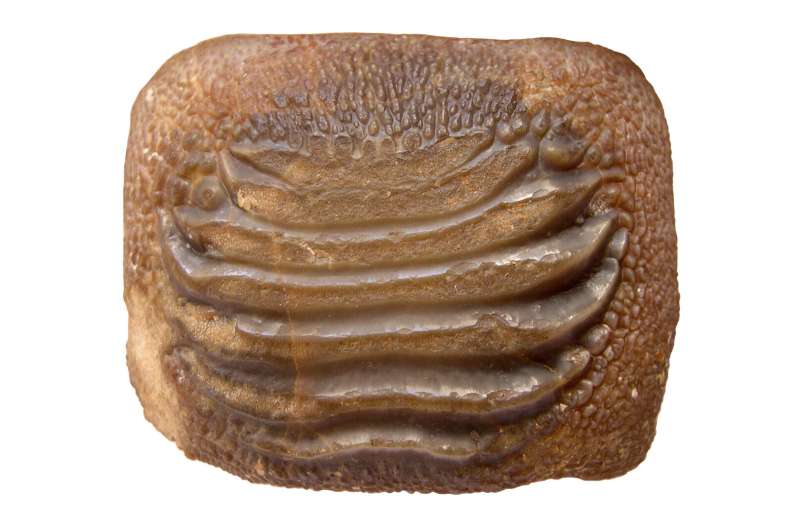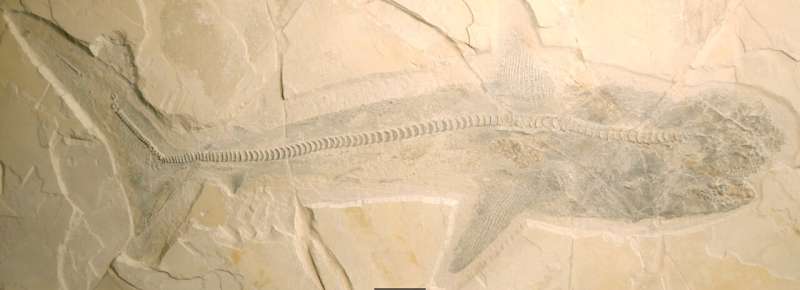April 24, 2024 report
This article has been reviewed according to Science X's editorial process and policies. Editors have highlighted the following attributes while ensuring the content's credibility:
fact-checked
peer-reviewed publication
trusted source
proofread
Exceptionally well-preserved shark fossils from the time of the dinosaurs identified in Mexico

An international team of archaeologists, paleontologists, evolutionists and geoscientists has analyzed ancient shark fossils from the time of the dinosaurs that were recently unearthed in Mexico. In their paper published in the journal Proceedings of the Royal Society B: Biological Sciences, the group describes the condition of the fossils and where they fit in the shark family.
The fossils were uncovered in a limestone quarry in northeastern Mexico, embedded in rock. Some had profiles that were fully preserved, allowing accurate assessments of size and other details. Important features were also clearly visible in some of the fossils, such as eye sockets, fins, tails and the outlines of some organs and cartilaginous structures.
The researchers found that the largest of the sharks was quite large, measuring 9.7 meters (more than 30 feet). It was bigger than modern great white sharks and possibly the largest durophagous shark ever to have existed.
They also found that it was of the genus Ptychodus, which were first discovered in the middle of the 18th century, and described based on their teeth, which could be nearly 55 centimeters (about 22 inches) in length. They also were known for their strong bite, allowing them to crush the shells of prey.
The research team noted that the fossil was so well preserved that they could study its vertebrae and teeth. They dated the specimens to the Late Cretaceous.

The new fossils were found to be sharks that belonged to the mackerel shark group, which includes modern great white sharks, salmon sharks and mako. Like their relatives, they had teeth that could be used for grinding and their body shape suggested that they likely consumed sea turtles and ammonites as a major part of their diet—a factor that might have led to their demise approximately 76 million years ago, as they competed with many other creatures that also hunted the same prey.
The researchers note that the bodies of the sharks were more streamlined than Ptychodus was believed to have been, suggesting they were fast swimmers. They also note that the sharks likely resembled the porbeagle shark in form, which still exists today.

More information: Romain Vullo et al, Exceptionally preserved shark fossils from Mexico elucidate the long-standing enigma of the Cretaceous elasmobranch Ptychodus, Proceedings of the Royal Society B: Biological Sciences (2024). DOI: 10.1098/rspb.2024.0262
Journal information: Proceedings of the Royal Society B
© 2024 Science X Network





















